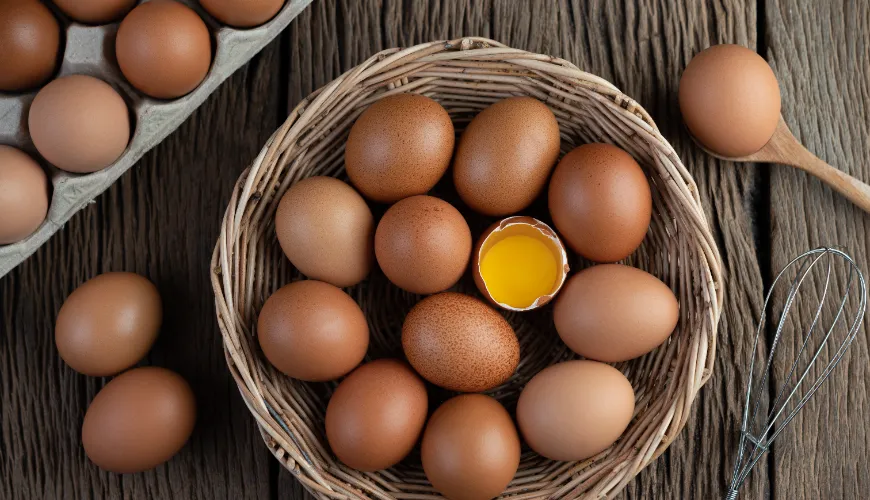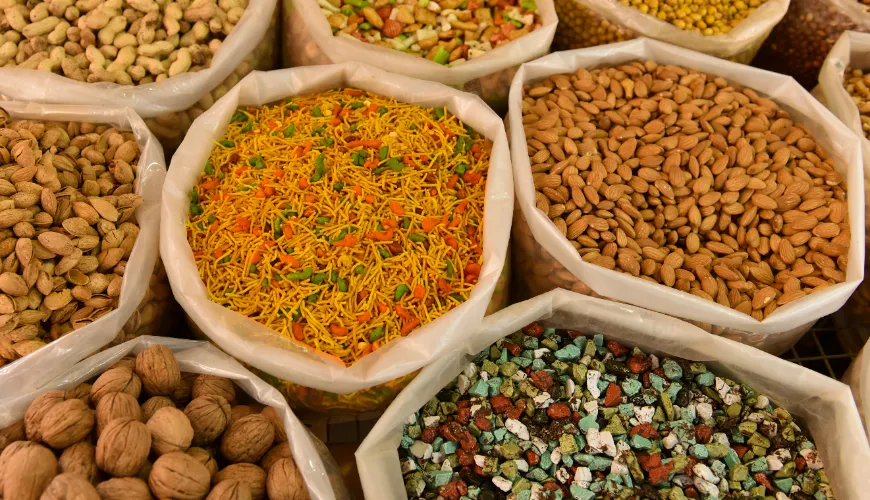
Fiber and its role in nutrition

Why Fiber is a Key Element of a Healthy Diet
Fiber is a fundamental building block of a healthy lifestyle and has a crucial impact on the overall functioning of the human body. Let's take a look at why fiber is so important, what its main benefits are, and how we can incorporate it into our daily diet.
What is Fiber?
Fiber is a component of plant foods that is indigestible by the human digestive system. Although our body cannot fully break it down, it has several important functions for our health. Fiber is divided into two main types: soluble and insoluble.
Soluble fiber dissolves in water and creates a gel-like substance that helps lower cholesterol levels and regulate blood sugar levels. It can be found in fruits, vegetables, oats, and legumes.
In contrast, insoluble fiber does not absorb water but helps improve bowel movement and prevents constipation. This type of fiber is found in whole grain products, bran, nuts, and seeds.
Benefits of Fiber
1. Supports Digestion
Fiber is a key element for proper digestion. Insoluble fiber increases stool bulk and speeds up its passage through the intestines, which helps prevent constipation. Soluble fiber, on the other hand, supports the growth of beneficial bacteria in the gut, contributing to overall digestive tract health.
2. Regulates Blood Sugar Levels
By adding fiber to our diet, we can effectively regulate blood sugar levels. Soluble fiber slows down sugar absorption, which can help people with diabetes or those trying to prevent blood sugar spikes.
3. Lowers Cholesterol Levels
One of the significant benefits of soluble fiber is its ability to lower bad cholesterol (LDL) levels in the blood. Fiber binds to cholesterol in the digestive tract and helps expel it from the body, thereby reducing the risk of heart disease.
4. Weight Control
Fiber plays an important role in weight management. High-fiber foods tend to be more filling, which means we consume fewer calories. Fiber also slows digestion, helping to maintain a feeling of fullness for a longer period.
5. Prevention of Certain Diseases
Adequate fiber intake is associated with a lower risk of developing certain chronic diseases, including heart disease, type 2 diabetes, and some types of cancer, especially colon cancer.
How to Incorporate More Fiber into Your Diet
Incorporating more fiber into your diet doesn't have to be complicated. Here are some tips on how to do it:
Breakfast
Start your day with a high-fiber meal. Oatmeal, whole grain cereals, or smoothies with added fiber (e.g., chia seeds or flaxseeds) are great choices.
Lunches and Dinners
Include more vegetables, legumes, and whole grain products in your main meals. For example, whole grain bread, brown rice, quinoa, or whole grain pasta.
Snacks
Choose fiber-rich snacks. Nuts, seeds, fruits, and vegetables are ideal options. You can also prepare hummus with sliced vegetables or whole grain crackers.
Fluids
With increased fiber intake, it's important to drink enough water. Fiber needs water to function properly and to prevent constipation.
Recommended Daily Fiber Intake
According to experts, an adult should consume about 25 to 30 grams of fiber per day. Unfortunately, most people do not reach this amount. If you are not used to a high fiber intake, it is recommended to gradually increase the amount to allow your body to adjust.
Fiber Sources
Fiber is present in many different foods. Here are some of the best sources:
Fruits and Vegetables
Berries, apples, pears, citrus fruits, broccoli, carrots, and spinach are excellent sources of fiber.
Legumes
Beans, lentils, peas, and chickpeas are not only rich in fiber but also in protein.
Whole Grain Products
Whole grain bread, brown rice, oatmeal, quinoa, and whole grain pasta also contain high amounts of fiber.
Nuts and Seeds
Almonds, chia seeds, flaxseeds, and sunflower seeds are excellent sources of fiber and healthy fats.
Fiber and Different Life Stages
The need for fiber can vary at different stages of life. Children and teenagers require sufficient fiber for growth and development, while adults need it for maintaining healthy digestion and preventing chronic diseases. Older adults should pay special attention to fiber intake to support proper digestion and maintain a healthy gut microbiome.
Pregnancy and Fiber
During pregnancy, adequate fiber intake is especially important. It helps prevent constipation, which is a common issue during this period, and also supports the overall health of both mother and child.
Children and Fiber
In children, it is important to gradually introduce fiber and ensure that their diet is varied and balanced. Fruits, vegetables, whole grain products, and legumes should be part of every child's daily diet.
Healthy Habits for Higher Fiber Intake
To increase fiber intake, you can try several simple changes in your daily life:
Swap White Bread for Whole Grain
Instead of white bread and pasta, choose whole grain options. They contain more fiber and other nutrients that benefit your health.
Add Vegetables to Every Meal
Incorporating vegetables into every meal is an easy way to boost fiber intake. Try adding vegetables to sauces, soups, or as a side dish to the main course.
Snack on Nuts and Seeds
Nuts and seeds are a great fiber-rich snack. You can add them to yogurt, smoothies, or eat them on their own.
Experiment with Legumes
Legumes like beans, lentils, and chickpeas are excellent sources of fiber. Try adding them to salads, soups, or use them as a base for vegetarian dishes.
As you can see, fiber plays a very significant role in the human diet. Take advantage of the mentioned types and incorporate it into your life.

